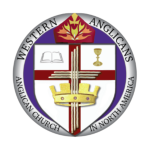What is Anglicanism?
This Anglicanism definition is adapted from the four characteristics that were written by J.I. Packer, author of Knowing God.
Anglicanism is catholic Christianity. By catholic, it doesn’t mean Roman Catholic, but the universal communion of churches in the global church seeking cooperation, discernment, and integration of the full history of the faith. This inclusive view seeks to incorporate the rich traditions of our faith with the mission inspired by Jesus Christ. Anglicanism seeks to maintain the belief and practice, being in-sync with the first followers of Jesus and their examples.
Anglicanism is canonical Christianity. Quite simply this means that the Anglican faith tradition, absolutes, and doctrine are based solely on the Bible. The Word of God confronts the world and the church in challenging ways. This means that if there is something in the Bible that we aren’t teaching, we will teach it; and if there is something that isn’t in the Bible and we teach it as absolute truth, we will drop it. Everything essential for salvation comes from the Bible, and that is what we teach.
Anglicanism is creedal Christianity. This means that the two ecumenical creeds agreed upon by the whole church, the Nicene Creed and the Apostles’ Creed, are not only foundational in the constitution of the church, but also play an important role in professing our beliefs during our worship services. Anglicans strive to keep before their hearts and minds the truth of God, made known to us through Jesus Christ by the Holy Spirit. We remain united together with our brothers and sisters around the world through Christ’s work within us as we confess our core beliefs passed down by the generations before us.
Anglicanism is comprehensive Christianity. This means we make a distinction between what is primary and essential and what is secondary and non-essential. We embrace essential truths like the doctrines of the Creed, or the basic ethics that Scripture teaches following from those doctrines (repentance, obedience, loving service within biblical parameters, and so on). As such, we hold on to the faith the church has always believed. Where we disagree on secondary issues there is tolerance as long as those issues do not contradict Scripture.
James I. Packer was an Anglican priest, and a professor of theology at Regent College in Vancouver, BC. He was the author of many books, and was a well-known speaker around the world.
What is Liturgy?
The Book of Common Prayer
The Book of Common Prayer is a structured biblical order of worship and a comprehensive service guide for Anglican churches. We believe in the power of written prayers and the history of the Church tradition. These prayers have been said by hundreds of thousands of church members across time. We believe these prayers hold and shape our theology. They form us and guide us to the truth in Scripture and the right worship of God.
The Church Calendar
How We Tell Time
Time orients us to memories, seasons, and new beginnings. Just like birthdays, anniversaries, and holidays bring back the experiences that shaped us, participating in a calendar rhythm gives us a new sense of culture and identity. Just like our country and the world share holidays and seasons, the church calendar was established to reorient the body of Christ to his kingdom and reign in our lives. The church calendar also helps people organize their lives while waiting for the second coming of Christ.
Check out this video for a glance at how the church calendar unfolds.
What Anglicans Believe
The Nicene Creed
We believe in one God, the Father, the Almighty, maker of heaven and earth, of all that is, visible and invisible. We believe in one Lord, Jesus Christ, the only Son of God, eternally begotten of the Father, God from God, Light from Light, true God from true God, begotten, not made, of one Being with the Father. Through him all things were made. For us and for our salvation he came down from heaven: by the power of the Holy Spirit he became incarnate from the Virgin Mary, and was made man. For our sake he was crucified under Pontius Pilate; he suffered death and was buried. On the third day he rose again in accordance with the Scriptures; he ascended into heaven and is seated at the right hand of the Father. He will come again in glory to judge the living and the dead, and his kingdom will have no end. We believe in the Holy Spirit, the Lord, the giver of life, who proceeds from the Father and the Son. With the Father and the Son he is worshiped and glorified. He has spoken through the Prophets. We believe in one holy catholic and apostolic Church. We acknowledge one baptism for the forgiveness of sins. We look for the resurrection of the dead, and the life of the world to come. Amen.
Liturgy Word Descriptions
One of the two primary sacraments of the church celebrating Holy Communion (symbolic as the body and blood of Jesus) in worship of the Triune God.
A large symbolic candle that shines in our worship service which represents the resurrection of Christ during the Easter season.
The middle way is a phrase often used to describe the balance of the Anglican tradition as it grasps the best of both worlds.
An Anglican tradition in which the emphasis is on orthodox or catholic elements.
A group organized of congregations under a specific bishop’s leadership. Primarily a regional distinction but not always the case today.
An overseer of a particular diocese in the Anglican church that guides the unity, faith, and discipleship of the community for the ministry of Christ with the church body and world.
An ordained minister primarily focusing on serving those in need within the Anglican church by supporting the priest and rector.
From the Latin word “ruler.” The lead pastor of a congregation chosen to serve and guide with Jesus the particular members of a congregation.
A person from the congregation chosen to read scripture during the worship service.
An affirmation of someone becoming an official member of the Anglican church or a reaffirmation of a previous baptism.
A lay person that helps with giving communion during the worship service.
What is Liturgy?
A patterned form of worship with guided prayers for God’s people.
A collection of prayers and scriptures for the Anglican church with several versions dating back to the 1600’s.
Daily Bible readings for morning and evening from the book of common prayer.
A short prayer of thanksgiving, request, and praise to God.
A collect specifically for a week during the church year. Typically, part of the weekly church service and daily office.
A list of readings from the Bible for Sunday including both Testaments, Psalms, and Gospel reading. The lectionary has a 3-year cycle.
Ancient statements of faith including the Apostles Creed, Nicene Creed, and Athanasian Creed that hold an inclusive doctrine of our theology and understanding of God’s truth.
A sermon or interpretation of the Word of God for the people.
An outward expression in a visual form representing an inward spiritual reality. It is a means by which we receive the grace of Christ.
One of the two primary sacraments of the church where a person becomes one with the church and Christ through a declaration of dying to the old way of life and embracing a new life in Christ.
Meaning the universal church or unity making up a whole.
A council of members that governs the church and its ordained servants of deacons, priests, and rector.
Appointed leaders of the vestry that guide the group in unison though vision and financial decisions.
One who carries the cross down the center of the worship service in procession.
Helps people organize their lives while waiting for the fulfillment of the second coming of Christ.
An intentional time of prayer and keeping watch during a time of sleeping.
Meaning “coming,” is the four Sundays before Christmas preparing our hearts to welcome Christ’s birth.
A season in-between Christmas and Lent revealing the life and glory of Jesus.
Modeled after Jesus who went into the wilderness to be with God for 40 days, we also observe 40 days of penitence (repentance and confession) that prepare us through self reflection by creating space for the gift of Jesus on Easter.
A week that consists of: Palm Sunday, Maunday Thursday, Good Friday, Holy Saturday, and finally the joyous Easter Sunday!
The time of ordinary isn’t implying plain, but the rhythms outside to direct seasons. This is an intentional time to follow Jesus in the regularities of life. This is where rubber meets the road and spiritual growth happens through daily living and reflecting.
Meaning “50 days after,” the season drawn from the book of Acts where we celebrate the gift of the Holy Spirit for the church and every believer.




